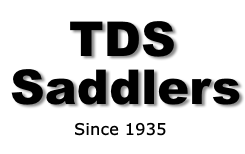Basic Livery Contract
How to write a basic Livery Contract
Without a written contract, problems will arise. At very least, you may have a dissatisfied client – at worst, you could face a costly, protracted court battle!
A six-page document written in legal jargon is likely to frighten clients and is not necessary. But the contract should be neatly typed and set out the broad agreement between the livery yard owner and the client and be signed by both.
While a valid contract, creating legal obligations which can be enforced by a court, exists from the time you take payment for providing a service, an oral contract relies on memory and interpretation and can always be disputed. Put it in writing so that the terms are clearly understood.
The Contract Should
Identify the parties by name, address, and contact number.
Identify the horse/s by description of the horse, its name and if possible a photograph attached to the contract and initialled by both parties. Include a detailed physical description of the animal, its condition, and details of pre-existing injury. Tack and equipment provided with the horse also should be listed and identified.
Detail all costs, and who is responsible for them. Veterinary and farrier costs are usually the responsibility of the owner, and this should be included. Detail any additional costs: worming, clipping, additional supplements required and whether they are included in the livery charge or how much will be charged.
Details of services included in the livery charge. Is exercise included? Will the horse be groomed and saddled for the owner. Will tack be cleaned regularly? Spell out in detail the services and facilities that you agree to provide as part of the livery charge.
A waiver of liability should be included in which the horse owner agrees to a waiver of the yard’s liability for personal injuries or injuries to the horse. (This would not protect the livery yard owner against a claim for negligence.)
Include credit terms – when the bill should be paid, whether in advance or arrears and include a provision for an extra charge for bills overdue (or a discount for prompt payment!) Also include a provision for recovery of legal fees, if needed, to obtain payment.
An emergency Veterinary care authorization, including a clause allowing euthanasia on veterinary advice in an emergency if the owner cannot be reached.
If an animal is covered by mortality or loss of use insurance, that fact should be noted by the owner in the livery contract.
Include the hours during which owners are welcome to come and ride or visit their horse/s.
If and how often the horse is to be turned out, and if it is to be in a group or individually should be decided and written in.
ALL contracts should be reviewed by your legal adviser to ensure that they comply with your needs and protect your interests.
Livery Yard Rules
Every boarding stable owner should post a copy of their rules and their Lien on animals and effects, in a conspicuous place in the stables. In case of non-compliance with either the rules or payment arrangements, the client cannot claim ignorance of the existence of these policies or the ramifications of violation. In addition, ask clients to sign and give them a copy of the rules when they move in. Any Lien on animals and effects should be clearly stated in the livery contract, which they should also sign.
Sample Rules
Stable is open from 7:00 am to 8:00 pm only. Clients may ride only in the stated hours unless otherwise arranged.
Clients must make appointments to visit their horses outside these hours.
Absolutely No smoking in the yard.
Please help keep the yard clear of tack, brushes, halters, hoof pickings or manure – pick up after yourself and your horse.
All vehicles must be parked in the parking designated areas.
No visitors are allowed in the stables or the fields.
Do not feed your horse. If you believe your horse needs its rations increased, please notify the manager. Feeding your horse outside of the regular feeding period can cause disturbance to other horses.
No-one is allowed to ride on this yard without a hard hat and safe footwear.
Always mount and dismount outside, unless you are riding in the indoor arena.
No running or shouting in the yard or fields.
Always check your tack before riding. The stable will not be responsible for the quality of repair of your tack and will not be held responsible for any injury, accident and/or death associated with using tack in ill repair.
All injuries, accidents and damages must be reported to the manager.
Clients should notify the office, before leaving on a hack, what route they will be taking and approximate time of return, particularly if riding alone.
